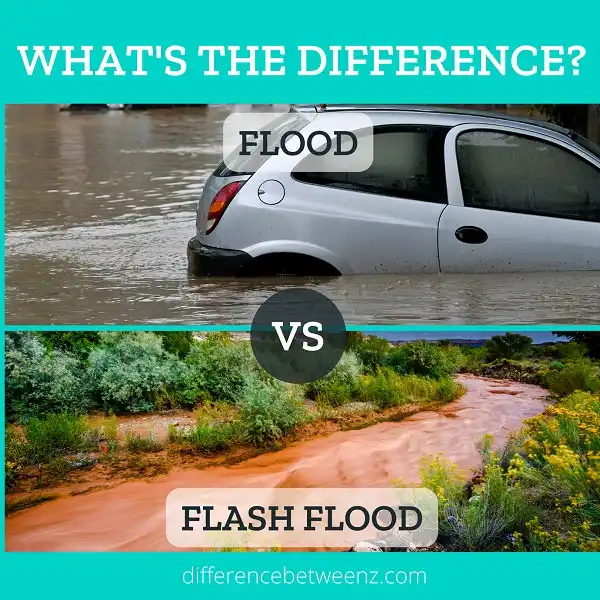A flood can be generally defined as a natural disaster resulting from water overflowing its normal boundaries. A flash flood, however, is a rapid flooding event that usually happens after heavy rains or thunderstorms. Flash floods can occur in areas that are not normally prone to flooding and can happen in just a few minutes or hours. It’s important to be aware of the dangers of flash flooding and take precautions to protect yourself and your family.
What is Flood?
A flood is defined as an overflow of water that submerges land that is usually dry. Floods are one of the most common natural disasters in the United States. Floods may occur because of heavy rainfall, storms, usage of melting snow, or failure of man-made structures such as levees or dams. Floods often cause damage to homes, and businesses, and can lead to loss of life. Floodwaters can rapidly rise and reach depths that exceed a person’s height, making it difficult to escape.
Flooding also brings debris like trees, power lines, and chemicals which can further complicate the situation. It is important to be aware of your surroundings during a flood and know if you are in an area that is at risk for flooding. If you are in an area that is prone to flooding, it is important to have a plan in place in case you need to evacuate. Floods are a serious hazard and it is important to be prepared in case you find yourself in one.
What is Flash Flood?
A flash flood is a type of flooding that occurs suddenly and with little to no warning. Flash floods can be caused by a number of different weather events, including thunderstorms, hurricanes, and tropical storms. Flash floods can also be caused by dam failure or levee failure. Flash floods can rapidly fill dry creek beds, rivers, and streams with water, causing them to overflow their banks. Flash floods can occur in areas that have been affected by heavy rains, and they can also occur in areas that have been affected by wildfires. Flash floods can cause significant damage to property and infrastructure, and they can also lead to loss of life.
Difference between Flood and Flash Flood
Flooding is one of the most common and costly natural disasters in the United States, typically occurring when rivers or other bodies of water overflow their banks. Flooding can occur during heavy rains, when levees or dams break, or when ocean waves come onshore. Flash floods are a type of flood that occurs suddenly and with little or no warning. They can occur within a few minutes or hours of excessive rainfall, melting snow, heavy winds, or dam failure. Floods and flash floods can both cause damage to buildings, roads, and bridges. They can also lead to loss of life, injuries, and displacement of residents. Flooding is typically more widespread than flash flooding and can cause more extensive damage.
Conclusion
A flood can be a gradual and long process, often lasting for weeks or even months. In contrast, a flash flood is an event that occurs suddenly, typically within six hours of excessive rainfall. Flash floods are more dangerous because they can rise rapidly and sweep away anything in their path. As you prepare for the upcoming hurricane season, it’s important to understand the difference between a flood and a flash flood so you know what to expect and how to stay safe.


